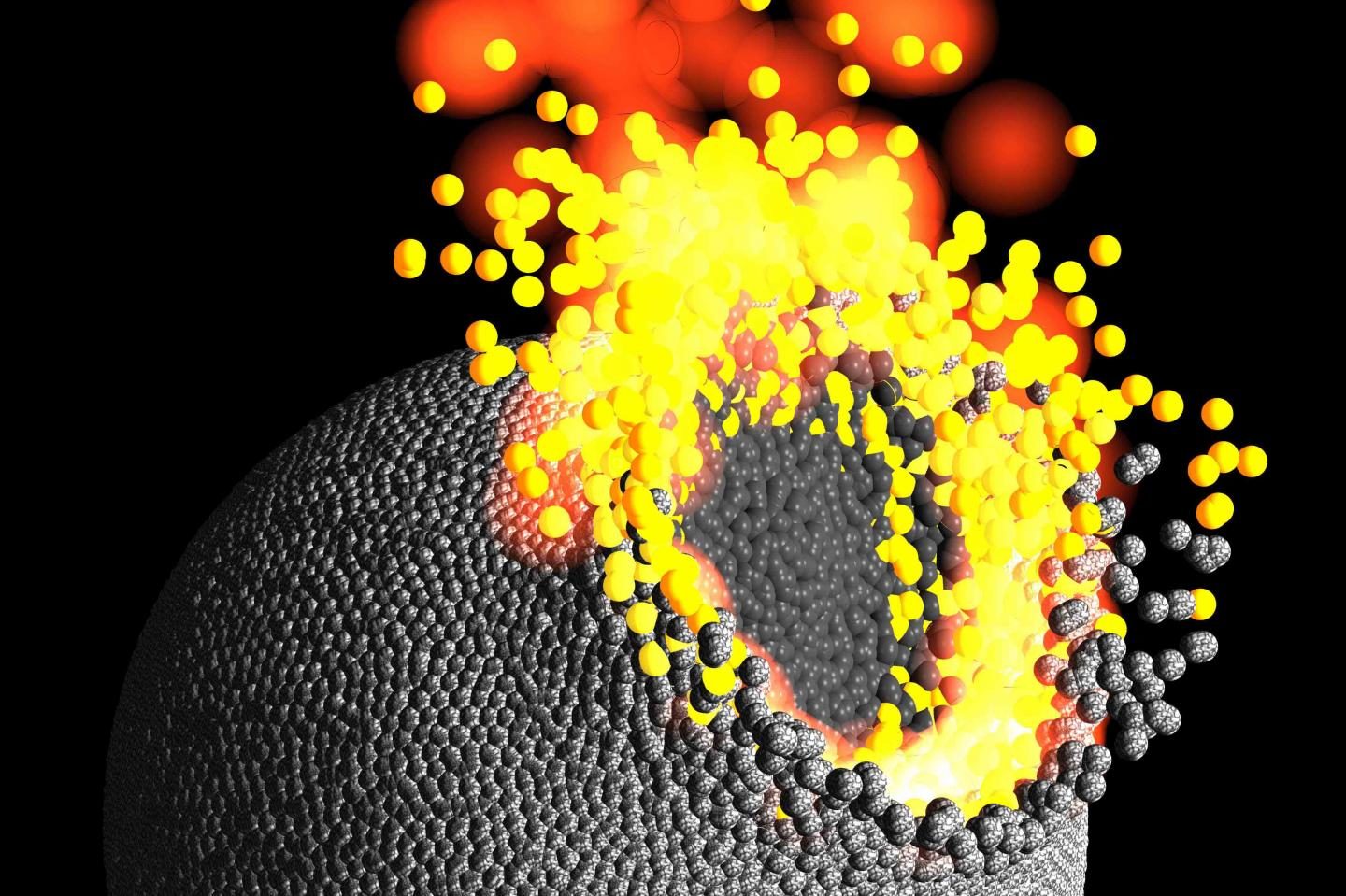Planets grow by a process of accretion - a gradual accumulation of additional material - in which they collisionally combine with their neighbours.
This is often a chaotic process and material gets lost as well as gained.
Massive planetary bodies impacting at several kilometres per second generate substantial heat which, in turn, produces magma oceans and temporary atmospheres of vaporised rock.
Before planets get to approximately the size of Mars, gravitational attraction is too weak to hold onto this inclement silicate atmosphere.
Repeated loss of this vapour envelope during continued collisional growth causes the planet's composition to change substantially.
Dr Remco Hin from the University of Bristol's School of Earth Sciences, led the research which is published today in Nature.
He said: "We have provided evidence that such a sequence of events occurred in the formation of the Earth and Mars, using high precision measurements of their magnesium isotope compositions.
"Magnesium isotope ratios change as a result of silicate vapour loss, which preferentially contains the lighter isotopes. In this way, we estimated that more than 40 per cent of the Earth's mass was lost during its construction.
"This cowboy building job, as one of my co-authors described it, was also responsible for creating the Earth's unique composition."
The research was carried out in an effort to resolve a decades long debate in Earth and planetary sciences about the origin of distinctive, volatile poor compositions of planets.
Did this result from processes that acted in the mixture of gas and dust in the nebula of the earliest solar system or is it consequence of their violent growth?
Researchers analysed samples of the Earth together with meteorites from Mars and the asteroid Vesta, using a new technique to get higher quality (more accurate and more precise) measurements of magnesium isotope ratios than previously obtained.
The main findings are three-fold:
- Earth, Mars and asteroid Vesta have distinct magnesium isotope ratios from any plausible nebula starting materials
- The isotopically heavy magnesium isotope compositions of planets identify substantial (~40 per cent) mass loss following repeated episodes of vaporisation during their accretion
- This slipshod construction process results in other chemical changes during growth that generate the unique chemical characteristics of Earth.
"While it was previously known that building planets is a violent process and that the compositions of planets such as Earth are distinct, it was not clear that these features were linked.
"We now show that vapour loss during the high energy collisions of planetary accretion has a profound effect on a planet's composition.
"This process seems common to planet building in general, not just for Earth and Mars, but for all planets in our Solar System and probably beyond, but differences in the collision histories of planets will create a diversity in their compositions."
Source: 'Magnesium isotope evidence that accretional vapour loss shapes planetary compositions' by R. Hin, C. Coath, P. Carter, F. Nimmo et al in Nature.




Reader Comments
It's just a theory, and like so many others, not readily provable, but we know the truth of Delamer Duverus and it is good.
[Link]
[Link]
[Link]
Velikovsky maintained that the Greek legend of the birth of Athena (what we now call the planet Venus) from Jupiter having a litterally splitting headache and spitting out an earth sized planet was litterally true.
And if you think of it, two relatively similarly sized and each positively magnetized worlds would, as they approached each other, not quite collide, as their magnetic forces would override their gravitational attraction. Etc. etc.
Lots of interesting stuff he found.
R.C.